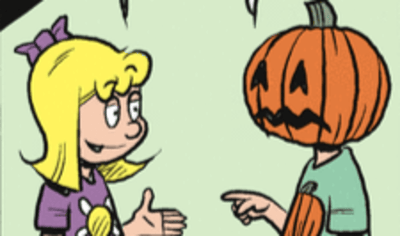Cartoonists Top The Social Scale
Skip to comments
Ripley’s Believe It or Not details the hierarchy of artists and Kieran Castaño shows, by drawing four claws, that cartoonists are in The Upper Class.
Well. maybe not all of them:

Cartoonists working on the Super-Fun-Pak Comix, edited by Ruben Bolling, are from a more common class.
Along with (some) cartoonists the Prince of Thule is definitely upper class who would never allow the adventures portraying his life to be degraded to gore status. Perhaps he has lost control of his biography.


Throughout Prince Valiant‘s many battles warriors have frequently been “run through” but the exit wounds were always tastefully off-panel, until now.

Is this the first time a piercing has been shown entering and exiting in a Prince Valiant Sunday page?
Were the Comics Code Censors asleep at King Features? Will we have to convene a Senate subcommittee?
Okay, maybe violence and gore are allowed, but blood as part of a natural biological process!!?? Surely not.

Our little Heart of the City is growing up. Is this another first?
There had to be major conferences between Steenz and her Andrews McMeel editors over this week-long (two-weeks?) story and how they would be presenting it. I’m also guessing that newspaper editors were notified about the story. I’m also guessing there will be letters of outrage to the editors running the story.

By the way – good on you Steenz and AMS.
Meanwhile in Tracyville…


Obviously Dick Tracy is, and always has been, based in Chicago though the strip itself has never admitted it. Ironically the Tribune Tower depicted in both of the strips above is now Tribune Tower Residences and is now a Monument to Journalism’s Past.
The new story is again by “guest writer” Eric Costello while Mike Curtis continues to battle health issues.
Lalo Alcaraz spoofs a popular Mexican game in what could be a Cartoonist for Kamala La Cucaracha page.





Comments 6
Comments are closed.